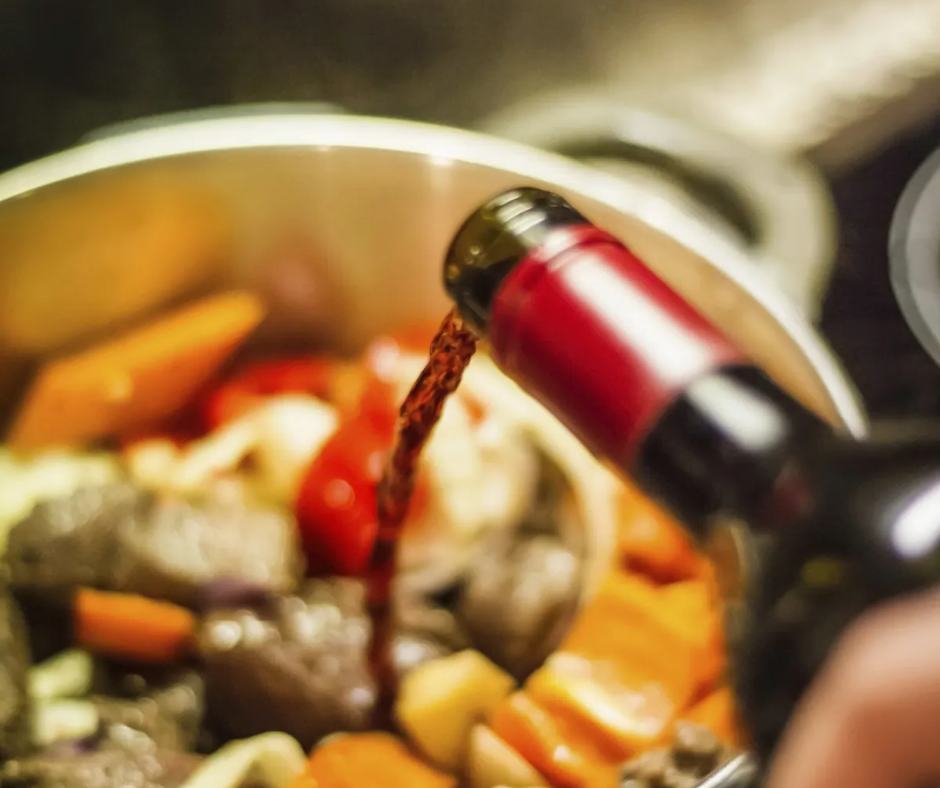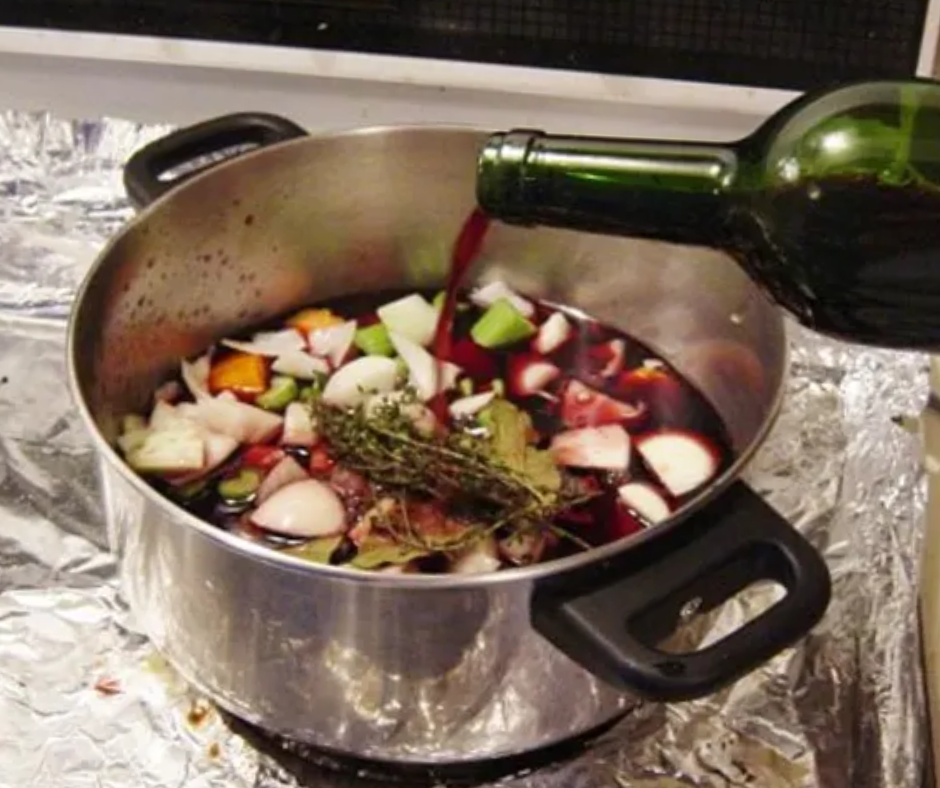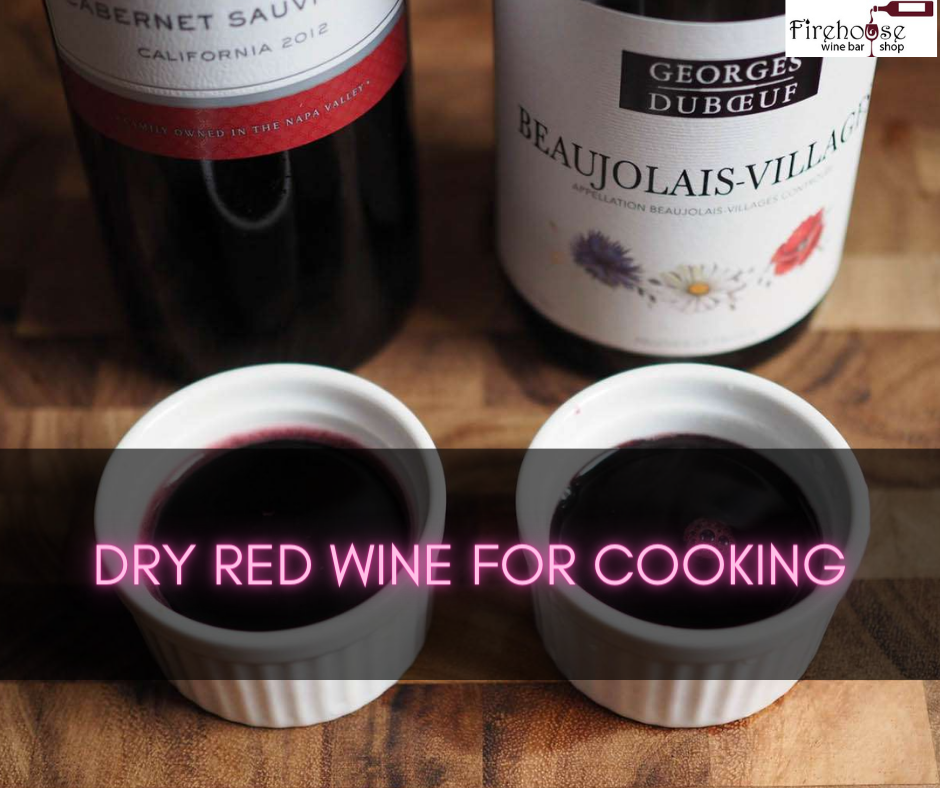Introduction
Cooking with wine can elevate the flavors of your dish and take it to the next level. Dry red wine is one of the most common types of wine used in cooking. It can be tricky to choose the right one, but by following a few basic rules, you can enhance the taste of your meal. This blog will help you explore the Dry Red Wine for Cooking.
Benefits Of Cooking With Dry Red Wine
Using dry red wine in cooking has many benefits beyond just adding flavor to your dish. As the wine is reduced, its flavors become more intense, which can enhance the overall taste of your food. Wine also contains acid, which can tenderize meat and balance out the flavors of your dish. Additionally, wine can be a great substitute for salt, which can be helpful for those who are watching their sodium intake.
Common Misconceptions About Cooking With Wine
Many people believe that cooking wine is the best option for recipes that call for wine, but this is far from the truth. Cooking wines sold in grocery stores are often a blend of inferior wines and added salt, which can ruin the taste of your dish. Another common misconception is that leftover, uncorked wine can be used for cooking. However, wine that has been open for too long or has lost its flavor and aroma will not enhance the taste of your dish. It’s important to use a dry red wine that you would drink, as the quality of the wine will impact the overall taste of your recipe.
In conclusion, choosing the right dry red wine for cooking is essential to enhance the taste of your dish. Avoid using cooking wine or leftover wine that has gone bad. Instead, opt for a quality dry red wine you enjoy drinking. Following these basic rules can take your cooking to new heights.

What Is A Dry Red Wine?
Defining Dry Red Wine
Dry red wine is a type of wine that has a low residual sugar content, which means it’s not sweet. This type of wine is made from red grapes fermented without adding sugar. Because of this, the resulting wine has a higher alcohol content and a more complex flavor profile than wines with higher sugar content. Some popular types of dry red wine include Cabernet Sauvignon, Pinot Noir, Merlot, and Syrah.
How Is Dry Red Wine Made?
The process of making dry red wine begins with the harvesting of ripe red grapes. Once the grapes are harvested, they are usually crushed to release the juice and skins. The skins are left in contact with the juice during fermentation, which allows the wine to extract color, tannins, and flavor compounds.
During fermentation, yeasts convert the natural sugars in the grapes into alcohol. The fermentation process can take anywhere from a few days to several weeks, depending on the type of grape and the desired style of wine. Once fermentation is complete, the wine is aged in oak barrels (or sometimes stainless steel tanks) to allow it to develop more complex flavors and aromas.
Dry red wine is versatile and can be enjoyed on its own or used in cooking to enhance the flavors of various dishes. When selecting a dry red wine for cooking, it’s important to choose one that you would drink, as the quality of the wine will impact the overall taste of your recipe. By following a few basic guidelines, such as avoiding cooking wines and using young wine instead of aged wine, you can elevate the taste of your dish and take your cooking to new heights.
The Importance Of Choosing The Right Dry Red Wine
Dry red wine is a popular ingredient in many dishes, as it can enhance the flavors of various foods. However, it’s important to choose the right one when cooking with dry red wine. The quality of the wine will impact the overall taste of your dish, so it’s essential to select a high-quality dry red wine that is appropriate for your recipe.
How To Choose A Dry Red Wine For Cooking
When selecting a dry red wine for cooking, remember that as an ingredient, the wine conveys all of its flavors, body, and acidity to the dish. While its subtleties may not be as pronounced, its flavors will be more noticeable as the wine is reduced. To choose the right dry red wine for cooking, follow these guidelines:
- Choose a wine that you would drink. If you wouldn’t drink it, don’t cook with it.
- Use young wine instead of aged wine. Young wines tend to have a fresher taste and can impart more flavor to your dish.
- Consider the flavor profile of the wine. Different types of dry red wine have varying acidity levels, tannins, and fruity or earthy notes. Choose a wine that will complement the flavors of your dish.
Why Not To Use Cooking Wine From Grocery Stores
Avoid using cooking wine that is sold in grocery stores. These wines may be inexpensive, but they are a blend of inferior wines and added salt. They can ruin the taste of your dish and are generally not recommended for cooking. Additionally, don’t use leftover wine that has been uncorked and past its prime drinking time. Always use a fresh bottle of wine for cooking.
In summary, choosing the right dry red wine for cooking can significantly affect your dish’s overall taste. Following these simple guidelines and avoiding cooking wine from grocery stores can elevate your cooking to a new level and impress your taste buds.

Best Red Wines For Cooking
When cooking with red wine, choosing the right one can make all the difference in the final dish. Here are two of the best red wines for those looking to add depth and complexity to their cooking.
Cabernet Sauvignon
Cabernet Sauvignon is a full-bodied wine with a rich flavor profile. Its high tannin content makes it a great choice for hearty red meat dishes like beef stew or pot roast. It has notes of black currant, tobacco, and oak, which add complexity to the dish.
Merlot
Merlot is a versatile wine that can be used in various dishes. It has a medium to full body and a fruity flavor profile with hints of coffee and chocolate. Its versatility makes it a great choice for meat sauces, vegetables, and desserts.
When choosing a red wine for cooking, avoiding using cooking wine sold in grocery stores is important. These wines may be inexpensive, but they are often a blend of inferior wines and added salt, which can negatively impact the taste of your dish. It’s also important to use a fresh bottle of wine instead of leftover wine that has been uncorked and past its prime drinking time.
When selecting a red wine for cooking, choose one you would drink. Young wines tend to have a fresher taste and can impart more flavor to your dish. Consider the flavor profile of the wine and choose one that will complement the flavors of your dish.
In conclusion, choosing the right red wine for cooking can elevate your dish. Cabernet Sauvignon and Merlot are the best red wines for cooking due to their flavor profiles and versatility. Following these simple guidelines, you can create delicious meals that impress your taste buds.
More Options For Cooking With Red Wine
When cooking with red wine, many options exist beyond Cabernet Sauvignon and Merlot. Here are two more red wines to consider for your next cooking adventure.
Pinot Noir
Pinot Noir is a light-bodied red wine with a delicate flavor profile. It has notes of cherry, raspberry, and spice, which make it a great choice for dishes that feature lighter meats like chicken or pork. Pinot Noir is also a popular choice for sauces, as it adds a depth of flavor without overwhelming the dish.
Syrah/shiraz
Syrah, also known as Shiraz, is a bold, spicy red wine with a full-bodied flavor profile. Blackberry, pepper, and smoked meat notes make it a great choice for heartier dishes like beef or lamb. Syrah/Shiraz is also popular for marinades and braises, as it can stand up to strong flavors.
When selecting a red wine for cooking, it’s important to choose one that will complement the flavors of your dish and add depth and complexity to your recipe. Avoid using cooking wine sold in grocery stores and opt for a fresh bottle of wine that you would drink. By following these simple guidelines and considering the different flavor profiles of red wines, you can elevate your cooking and create delicious meals that will impress your taste buds.
Guidelines For Incorporating Red Wine In Recipes
When cooking with red wine, remember some important guidelines to ensure the final dish is flavorful and delicious. Here are some tips for selecting the right red wine and incorporating it into your recipes:
When To Add Red Wine While Cooking
Red wine can be added to dishes at various stages of the cooking process. It is often added at the beginning of cooking to help deglaze the pan and infuse the dish with its flavor. Red wine can also be added towards the end of cooking to add depth and complexity to the finished dish. Finally, some recipes may call for adding red wine at the beginning and end of cooking for maximum flavor.
How Much Red Wine To Use
The amount of red wine used while cooking depends on the recipe and personal preference. As a general guideline, add a small amount of wine, such as 1/4 to 1/2 cup, and taste the dish as it cooks. You can always add more wine later if desired. It’s important not to use too much wine, as this can overpower the other flavors in the dish.
In addition to Cabernet Sauvignon, Merlot, Pinot Noir, and Syrah/Shiraz, many other types of red wine can be used in cooking. Other options include Zinfandel, Malbec, Sangiovese, and Tempranillo.
When selecting a red wine for cooking, it’s important to choose one that is high quality and that you would drink. Avoid using cooking wine sold in grocery stores, as these are often inferior in quality and may contain added salt or preservatives.
By following these guidelines and experimenting with different types of red wine, you can take your cooking to the next level and create delicious dishes that will impress you.

Fortified Red Wines For Cooking
When cooking with wine, fortified red wines like Port and Marsala are an excellent option to add flavor and depth to your dishes. Here are some things to keep in mind when using fortified red wines in cooking:
Port Wine
Port wine is a sweet, fortified red wine from Portugal’s Douro Valley. It is often used in cooking to add richness and depth to sauces and marinades. When cooking with Port wine, you must use a good quality bottle you enjoy drinking. Ports can range in sweetness from dry to very sweet, so be mindful of the recipe you’re making and choose a Port that will complement the other flavors in the dish.
Marsala
Marsala is a fortified wine from the Italian region of Sicily and is often used in Italian and Mediterranean cooking. It is available in sweet and dry varieties, making it a versatile ingredient in the kitchen. When using Marsala in cooking, it’s important to use a high-quality bottle and to choose a sweet or dry variety based on the dish you’re making. Sweet Marsala is often used in desserts and sauces, while dry Marsala is a popular ingredient in savory dishes like chicken marsala.
When using fortified red wines in cooking, it’s important not to go overboard with the amount you use. Fortified wines can be quite potent, so start with a small amount and taste as you cook. You can always add more later if needed. Overall, fortified red wines like Port and Marsala can be a great way to elevate your dishes, adding depth and complexity that will surely impress.
Cooking With Red Wine: Tips And Tricks
Fortified Red Wines For Cooking
When cooking with red wine, fortified red wines like Port and Marsala are excellent options to add flavor and depth to your dishes. It’s important to use good quality bottles that you enjoy drinking to ensure that the flavor of the wine complements the other ingredients in your dish.
Port Wine
Port wine is a sweet, fortified red wine from the Douro Valley in Portugal. It’s often used in cooking to add richness and depth to sauces and marinades. When using Port wine, be mindful of the sweetness level, as it can range from dry to very sweet. Choose a Port that complements the flavors of the dish you’re preparing.
Marsala
Marsala is a versatile fortified wine from the Italian region of Sicily. It’s available in sweet and dry varieties, making it a great ingredient for sweet and savory dishes. Sweet Marsala is often used in desserts and sauces, while dry Marsala can be used in savory dishes like chicken Marsala.
Storing Red Wine
It’s important to store red wine properly to ensure its quality and flavor are preserved. When storing an open bottle of red wine, re-cork it tightly and store it in the refrigerator for up to 3-5 days. If you don’t plan on using the wine within this time frame, consider freezing it in ice cube trays for future use in cooking.
Cooking With Leftover Red Wine
Leftover red wine can be used in cooking to add flavor and depth to sauces and marinades. If you have a small amount of leftover wine, freeze it in ice cube trays and add the cubes directly to your dish as needed. If you have a larger amount of wine, consider using it to reduce red wine, which can be used as a sauce for roasted meats or vegetables.
Remember, when cooking with red wine, always choose a good quality bottle and taste as you go. Don’t be afraid to experiment with different wines and flavors to find the perfect combination for your recipe.
Conclusion
Now you should know about Dry Red Wine for Cooking. Cooking with dry red wine is a culinary technique to elevate the flavors of a dish to new heights. Dry red wines bring a concentration of flavors, from dark fruit to earthy undertones, that can enhance a dish’s overall taste profile. When choosing and cooking with red wine, it is essential to select good quality bottles that complement the other ingredients in the dish. Remember to taste as you go and not be afraid to experiment with different wines and flavors to find the perfect combination for each recipe.
FAQ: Dry Red Wine for Cooking: Culinary Elixirs: Selecting Dry Reds for Cooking
Q: Why should I not use cooking wine sold in grocery stores for my recipes?
A: Cooking wines sold in grocery stores are blends of inferior wines and added salt, which can ruin the taste of your dish.
Q: Can I use leftover wine for cooking?
A: If the wine is past its prime drinking time, you should not use it for cooking. The rule is that you shouldn’t cook with it if you don’t drink it.
Q: How does dry red wine affect the flavor of my dish?
A: Dry red wine conveys all of its flavors, body, and acidity to the dish as an ingredient. Its flavors will be more noticeable as it’s reduced.
Q: What kind of dry red wine should I use for a sweet sauce?
A: For a sweet sauce, choose a Port or fortified wine.
Q: What kind of dry red wine should I use for a dish that requires a jammy taste?
A: For a jammy taste, use a full-bodied wine.
Q: Is choosing the right dry red wine for cooking difficult?
A: Choosing the right dry red wine for cooking is easy if you remember a few basic rules.

Andre Lotz immigrated to the United States from South Africa almost 20 years ago. Still, he didn’t feel truly at home until he settled in Mobile—a city that reminds him of his childhood home of Fish Hoek on the southern cape of Africa.

